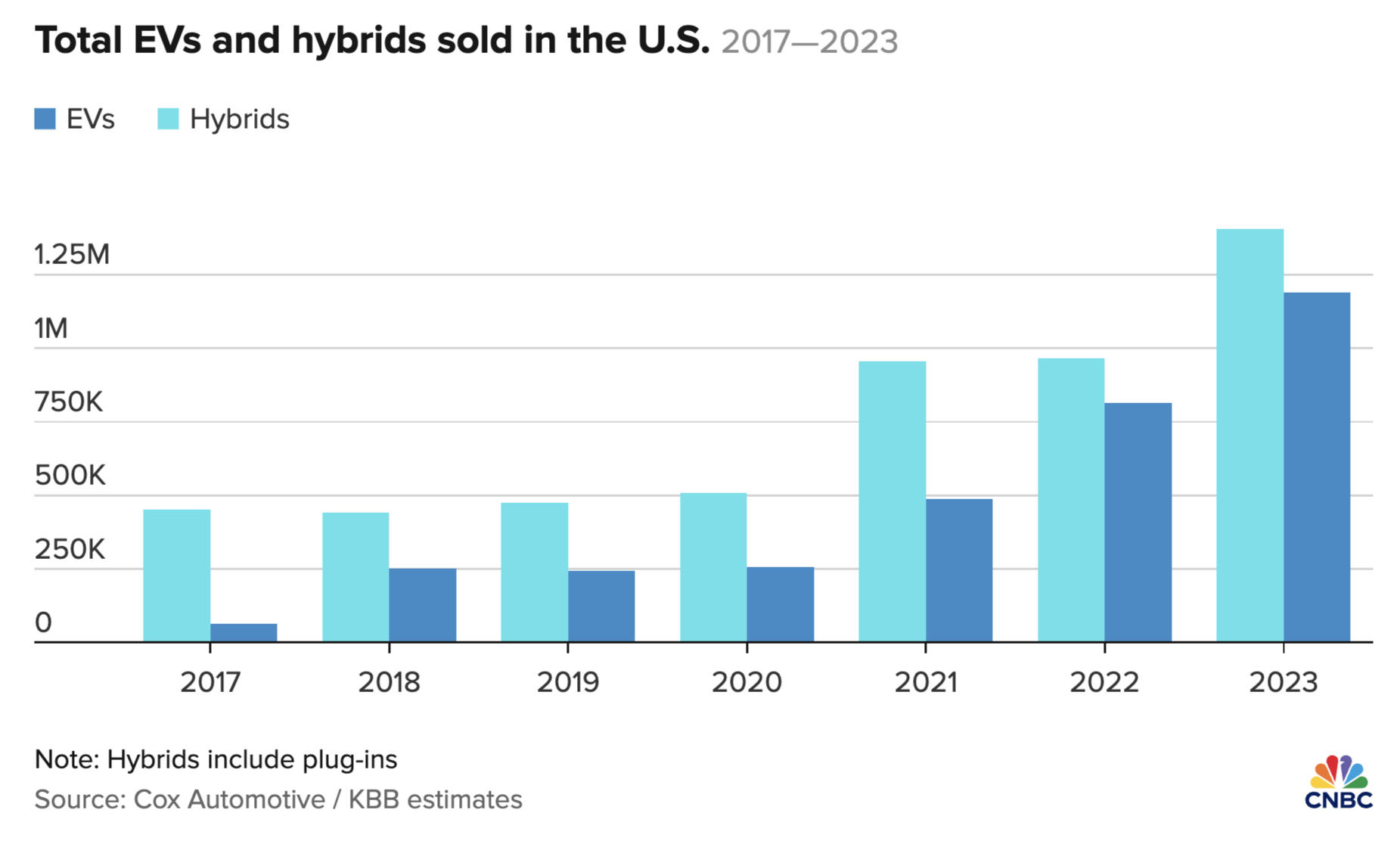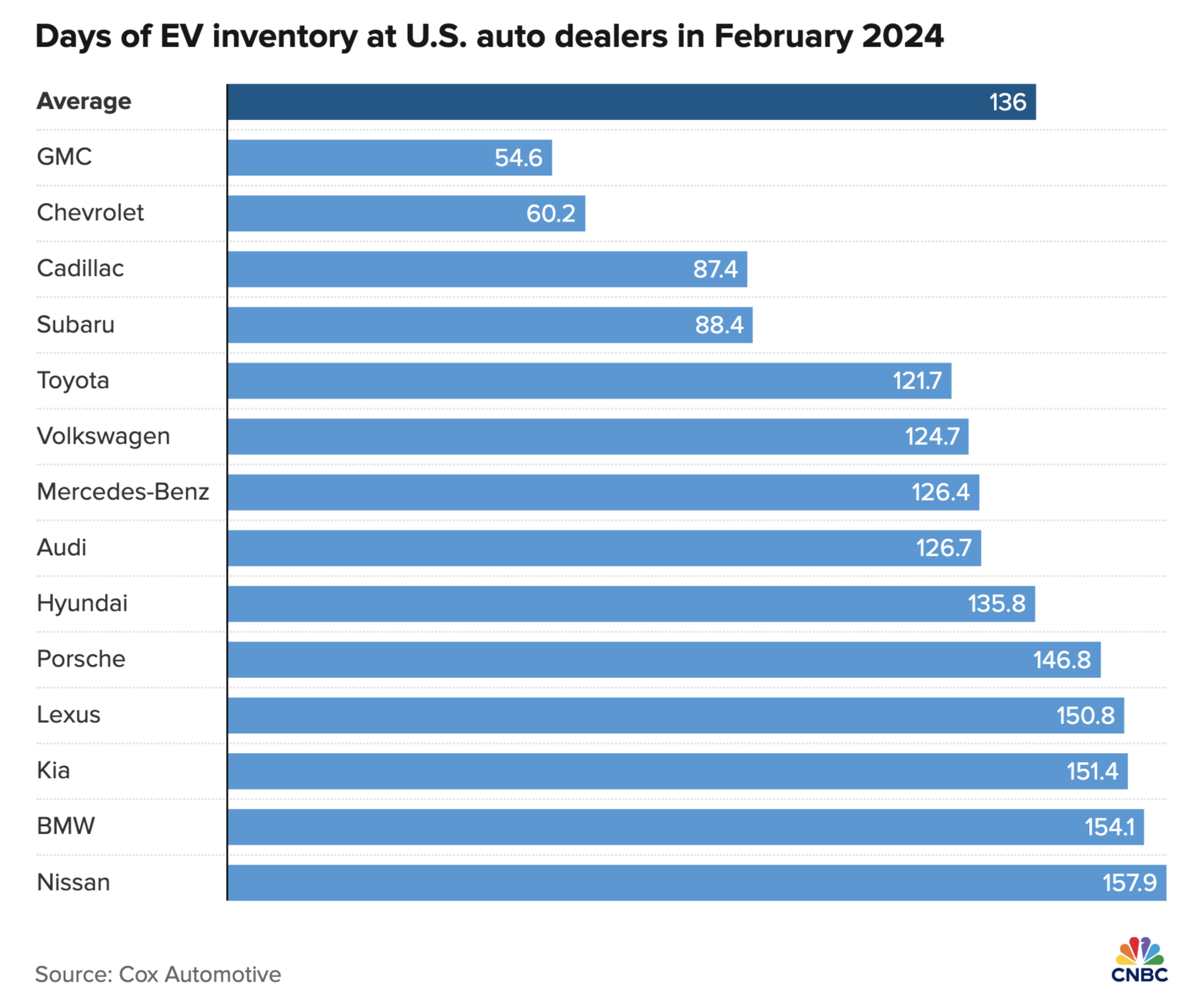EV Hype Fading As Biden Mandates All Electric Future
A recent survey by McKinsey & Co. found that almost half of American electric vehicle (EV) owners are considering going back to internal combustion engine cars, i.e. gasoline or diesel vehicles. Forty-six percent of survey respondents said they were likely to purchase a gas-powered vehicle for their next car purchase. The top three reasons behind the shift are the lack of charging infrastructure, high cost of ownership and the complexityof long-distance trips. Globally, 29 percent of EV owners are likely to switch back to internal combustion engine cars. The findings challenge the belief that once someone becomes an EV owner, they will stick to purchasing electric vehicles. Twenty-one percent of worldwide survey respondents stated they had no interest in purchasing an electric vehicle. The survey was distributed to 30,000 consumers across 15 countries.
Mainstream media sources have also admitted the failures of electric vehicles. “EV euphoria is dead,” CNBC wrote in a March report. The major car companies, such as Ford, GM, Mercedes-Benz, and others are scaling back or delaying their electric vehicle plans to give consumers greater choices. According to CBNC, an “all-electric future” is still in the works, but “at a much slower pace” than originally thought. Although consumer demand for electric vehicles has not shown up in the way executives had originally expected, sales of the vehicles are still predicted to increase in the years to come.
U.S. EV sales totaled a record 1.2 million vehicles last year, representing 7.6 percent of the overall national market. That share is projected by some forecasters to increase to between 30 percent and 39 percent by the end of the decade. A slowdown in the shift to electric vehicles was expected as early adopters satisfied their EV thirst and less tech-savvy buyers were slow to catch onto the trend, which will slow the EV market share growth over the next few years. Costs are also a consideration for many customers, as insurance and repair costs are higher and home charging requires substantial outlays. The cost of a replacement battery could be as much as $20,000. According to J.D. Power, the cost of replacing a battery in the Tesla Model 3 is approximately $13,000, which is over 30 percent of the sedan’s starting price.

Last year, thousands of car dealership owners across the United States signed a letter to the Biden administration opposing his push for electric vehicles. More than 3,800 auto dealers wrote, “We are deeply committed to the customers we serve and the communities where we operate, which is why we are asking you to slow down your proposed regulations mandating battery electric vehicle (BEV) production and distribution.” “Last year, there was a lot of hope and hype about EVs. Early adopters formed an initial line and were ready to buy these vehicles as soon as we had them to sell. But that enthusiasm has stalled,” the letter added. “Today, the supply of unsold BEVs is surging, as they are not selling nearly as fast as they are arriving at our dealerships — even with deep price cuts, manufacturer incentives, and generous government incentives.” “With each passing day, it becomes more apparent that this attempted electric vehicle mandate is unrealistic based on current and forecasted customer demand. Already, electric vehicles are stacking up on our lots which is our best indicator of customer demand in the marketplace.”
The available inventory of electric vehicles in the United States, measured in days’ supply, has soared to 136 days, according to Cox Automotive. That compares to the overall U.S. industry at a 78 days’ supply of new vehicles. The data excludes Tesla, Rivian and other automakers that sell directly to consumers rather than through franchised dealers. The slower adoption of electric vehicles has led to price cuts or discounts on several models such as the Ford Mustang Mach-E, Tesla Model Y and the Nissan Ariya. According to Nissan, cuts of up to $6,000 will “improve the model’s competitiveness and ensure we are delivering maximum value to our customers.”

GM, which was the first traditional automaker to go all in on electric vehicles, plans to roll out plug-in hybrid electric vehicles for consumers alongside electric vehicles and gas cars. Others, such as Hyundai, Kia, Toyota and, potentially, Volkswagen, plan to offer different levels of electrification across their lineups. GM is losing money on every electric vehicle it sells, but the company says it is on track to generate mid-single-digit pretax profit margins in 2025 as it produces more higher margin electric vehicles, works out kinks in battery manufacturing, and sees battery cost reductions.
Ford has never stated plans to exclusively offer electric vehicles globally, but it set targets to be all-electric in Europe by 2030, for 50 percent of its sales in North America to be electric by that same year and to achieve an 8 percent EV profit margin by 2026. It has since backed off many of these targets and is producing hybrids — specifically trucks — along with electric vehicles and plug-in hybrid electric vehicles for the United States. Ford’s losses per electric vehicle topped $100,000 during the first quarter of this year, which was reportedly more than double the loss per electric vehicles last year. At issue is the high cost of production — including batteries, which remain one of the largest costs of electric vehicle manufacture.
Conclusion
There is disillusionment with owners of electric vehicles in the United States with almost half of those surveyed indicating they will purchase a gasoline vehicle on their next vehicle purchase rather than another electric vehicle. Reasons are lack of charging stations, high cost, and long-range trip planning issues. This has made traditional car companies change their production plans, at least in the near term, slowing the pace of EV production and investing in hybrids that consumers seem to prefer. Traditional car companies have profits from sales of internal combustion vehicles to cover their losses in EV production, but many companies solely manufacturing electric vehicles are going under as they have no way to cover their losses. Consumers are definitely in the drivers’ seat. Just because the government mandates electric vehicles should not mean that U.S. consumers should blindly accept those mandates, particularly as they are somewhat of a lifestyle change.
*This article was adapted from content originally published by the Institute for Energy Research.

Speak Your Mind